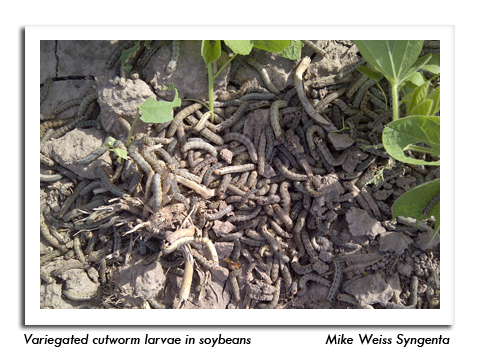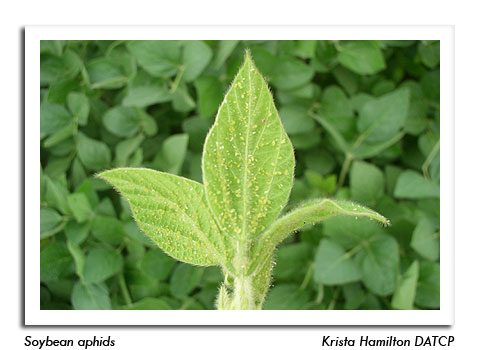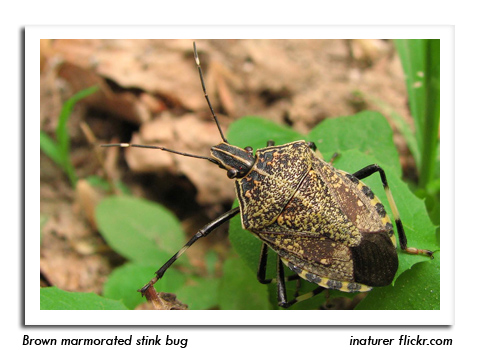
 |
|
|
Looking Ahead
Volume 57 Number 21 Date 11/08/2012 PEST HIGHLIGHTS OF 2012 VARIEGATED CUTWORM - Migrants arrived in unprecedented numbers in early May and larvae became prevalent in field crops about four weeks later. Considerable damage to alfalfa, corn and soybeans was reported from all areas of the state, with the most severe infestations occurring in Fond du Lac, Green Lake, Marquette and Sauk counties. Populations of this sporadic migratory pest were the highest in many years.SPOTTED WING DROSOPHILA - Several new county records were established in August and September in Bayfield, Brown, Door, Fond du Lac, Marinette, Monroe, Pierce, Vernon, Winnebago and Wood counties, following the detection of larvae and adult specimens in raspberry and blackberry plantings. Spotted wing drosophila has been collected in 13 Wisconsin counties from Dane to Bayfield since 2010, suggesting that this invasive Southeast Asian vinegar fly is present statewide. EUROPEAN CORN BORER - Larval surveys in the fall of 2012 found the lowest population in 71 years, 0.03 borer per plant. The previous lowest state average was 0.05 borer per plant in 1998. Only 19% of the 229 fields surveyed showed evidence of infestation while the other 81% had no detectable population. The historically low number of corn borers observed during this year's survey is indicative of the increased prevalence of Bt corn, which now comprises 63% or more of the state's corn acreage. TWO-SPOTTED SPIDER MITE - Drought conditions contributed to severe outbreaks of this arthropod in 2012. Infestations were the most widespread in at least eight years and informal estimates indicate that about one-quarter of the state's soybean fields were treated one or more times for mite control. Continued monitoring of soybeans and other crops was necessary from early July through the third week of August. SOYBEAN APHID - Extreme heat and extensive chemical treatment of fields for two-spotted spider mites regulated aphid population growth this year. Colonization of soybeans began by June 4 but economic populations failed to materialize in July and August. Densities statewide were the lowest since the first detection of soybean aphid in Wisconsin just over a decade ago and insecticidal control was generally unwarranted. FIRST REPORT OF PHYTOPHTHORA SANSOMEANA - During an early-season soybean survey, the root rot disease, Phytophthora sansomeana, was found infecting soybean roots in three fields in Jefferson, Marathon and Sheboygan counties. Phytophthora sansomeana is a newly described species that has been reported on corn in Ohio, Douglas fir in Oregon, soybean in Indiana, and weeds such as wild carrot, white clover and white cockle in New York. In 2011, it was isolated from Fraser firs grown in Wisconsin Christmas tree farms. To our knowledge, this is the first report of root rot caused by P. sansomeana on soybean in Wisconsin. Its potential impact on soybean production remains to be determined. BROWN MARMORATED STINK BUG - Established populations of the invasive brown marmorated stink bug (BMSB) are now suspected in Dane and Jefferson counties. A single nymph was collected on October 19 from the siding of a West Madison home and an adult specimen was found "at lights" in Madison on July 14. Another adult was collected from a car windshield in Jefferson County on September 28. These finds, in combination with earlier detections at two Middleton and Fort Atkinson residences last spring, strongly suggest that the invasive bug is established at low levels in south-central Wisconsin. The BMSB has been found indoors or in association with shipping materials on at least 10 occasions since 2010, but to date has not been detected in any agricultural setting in Wisconsin. -- Krista Hamilton, DATCP Entomologist 




|
|
|